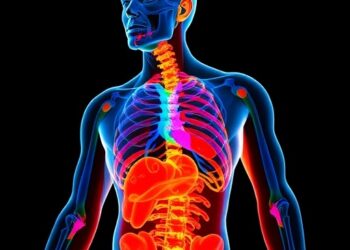David L. Perez, MD, MMSc, Founding Director of the Functional Neurological Disorder Unit at Massachusetts General Hospital and an associate professor of Neurology and Psychiatry at Harvard Medical School, is senior author of a new study in the Journal of Neurology, Neurosurgery and Psychiatry; Machine Learning Classification of Functional Neurological Disorder Using Structural Brain MRI Features.
David L. Perez, MD, MMSc, Founding Director of the Functional Neurological Disorder Unit at Massachusetts General Hospital and an associate professor of Neurology and Psychiatry at Harvard Medical School, is senior author of a new study in the Journal of Neurology, Neurosurgery and Psychiatry; Machine Learning Classification of Functional Neurological Disorder Using Structural Brain MRI Features.
Christiana Westlin, PhD, a post-doctoral research fellow in Neurology and Psychiatry at Mass General, is the first author of the study.
Summary:
In this study, we investigated whether structural brain MRI has potential to be a clinically useful tool for diagnosing functional neurological disorder (FND). Individuals with FND, a common, costly and potentially disabling condition at the intersection of neurology and psychiatry, can experience physical symptoms such as abnormal movements, limb weakness and/or convulsions.
We trained a machine learning algorithm to learn what the brains of patients with FND look like compared to healthy subjects or participants with psychiatric disorders (e.g., mood and anxiety conditions) that do not have FND, and then tested whether the algorithm could use this information to predict whether someone had FND.
Our findings point out the importance of both brain structure and function in the biological basis of FND.
Furthermore, the algorithm showed proof-of-concept potential in distinguishing individuals with FND, which is a first step in investigating the possibility to use structural brain MRI to assist in the diagnosis of FND.
What Question Were You Investigating?
We sought to investigate whether supervised machine learning, trained on structural brain MRI features, could be used to predict whether individuals had a diagnosis of functional neurological disorder (FND).
This question was motivated by a lack of clinical translatability from past studies investigating grey matter differences in FND, because they have for the most part relied on univariate, group-level analyses, and have reported heterogeneous findings.
In contrast, our approach allowed for detection of nuanced differences across a multivariate set of structural brain MRI features, as well as prediction of FND at an individual level.
What Were the Results?
We successfully classified participants with mixed FND against healthy control participants at rates significantly above-chance, and classification performance became even more robust when focusing on a functional motor disorder subtype.
We also achieved statistically significant above-chance accuracy when classifying mixed FND participants against a sample of psychiatric control participants, a finding that reflects one of the first efforts in the field to contextualize results using psychiatric controls.
What are the Clinical Implications and Next Steps?
These findings emphasize the need to consider brain structure alongside functional neurocircuitry in the pathophysiology of FND and establish proof-of-concept for structural brain MRI as a potential adjunctive diagnostic tool in FND. Next steps involve out-of-sample replications and multi-site classification efforts to establish the generalizability of these findings, as well as exploring the possibility of data-driven subgroupings in larger-scale data.
About Massachusetts General Hospital
Massachusetts General Hospital, founded in 1811, is the original and largest teaching hospital of Harvard Medical School. The Mass General Research Institute conducts the largest hospital-based research program in the nation, with annual research operations of more than $1 billion and comprises more than 9,500 researchers working across more than 30 institutes, centers and departments. MGH is a founding member of the Mass General Brigham healthcare system.
Journal
Journal of Neurology Neurosurgery & Psychiatry
Method of Research
Imaging analysis
Subject of Research
People
Article Title
Machine learning classification of functional neurological disorder using structural brain MRI features
Article Publication Date
22-Jul-2024




